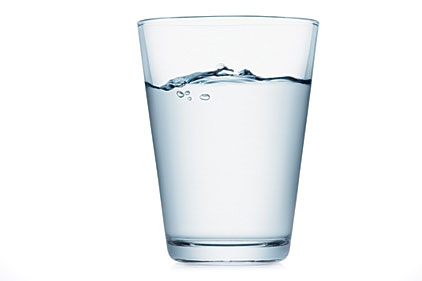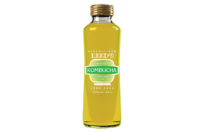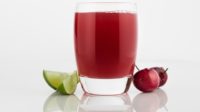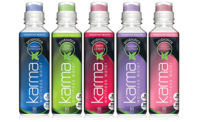
|
People of all ages know by now that fiber is “good for you,” and that they should be consuming more of it. A new study from Tate & Lyle, Decatur, Ill., revealed that nearly 90 percent of Americans believe that their digestive health is a top priority, and that consumers are interested in buying products with a “nutritional punch” of fiber.
Many shoppers are already scanning supermarket shelves for whole grain products, choosing “heart healthy” fiber-rich cereals and breads, and checking nutrition labels for dietary fiber values. Some are seeking gut-friendly prebiotic products to boost their digestive health and using supplement powder mixes that provide added servings of fiber to their diets.
The “cardboard factor” associated with dense bran muffins of the past left a lasting impression with many, despite recent consumer interest in fiber. But that’s all changing due to new and innovative ingredients available to manufacturers. Beverages now are getting their fair share of the fiber spotlight by adding ways for consumers to get their recommended daily amount of fiber.
More than just bulk
Campaigns around whole grains and prebiotics have spurred considerable consumer awareness of fiber, setting the stage for the acceptance of new fortified products that can increase fiber intake and provide health benefits from an entirely new angle.
The diverse family of dietary fibers is complex and not fully understood by most — even consumers who are aware of the topic might possess only a basic knowledge of specific items such as particular health benefits or daily recommended values.
“Fiber means lots of things to a lot of different people,” says Deborah Schulz, product manager at Cargill Health & Nutrition, Minneapolis. “Fiber in and of itself can have a lot of different health benefits.”
Fiber added to a weight loss beverage will mean one thing to one audience, she explains, whereas fiber added to a flavored drink might have a different marketing appeal to another audience. Any way you look at it, people are drawn to both proven and potential health benefits and are accepting the idea that fiber can be about much more than bulk and roughage.
The International Food Information Council (IFIC) found that a majority of Americans are interested in foods and beverages that can provide a host of health benefits, based on its 2011 Functional Foods/Foods for Health Consumer Trending Survey. These health benefits included the following: maintaining overall health and wellness; improving heart health, bone health and digestive health; and contributing to a healthy body weight.
The survey found that 62 percent of Americans were already consuming fiber for its associated heart health benefits, and 64 percent were aware of fiber’s associated health and weight management benefits. Seventy-two percent were aware of the benefits of prebiotics and prebiotic fiber, which is a significant increase since 2009, IFIC reports.
Santiago Vega, senior manager of nutrition marketing at Westchester, Ill.-based Corn Products International, which acquired National Starch Food Innovation in 2010, sees the “aura of healthfulness” around prebiotics in dairy foods and beverages as the connection to recent increases in awareness.
“Dairy beverages overall are a very good fit in terms of application and the perceived benefits from consumers,” he says. “But we’re also seeing more and more in innovative shelf-stable beverages.”
Shelf-stable beverages are an area that generally is targeted toward younger populations, he explains, and it’s where he expects to see the most activity.
Fiber does have a broader audience beyond the baby boomer generation, Vega says. Digestive health is a hot topic that crosses all demographics, and although the primary audience for fiber is baby boomers interested in digestive health and overall well-being, active and health-aware adults ages 18 to 34 also are a target market, he adds.
Fiber is top of mind for parents, too. Tate & Lyle recently reported that more than 85 percent of parents believe fiber is important for their own diets, and 9 out of 10 parents believe it is important to include it in their children’s diets.
No matter the demographic, consumers will only be interested in fiber-fortified beverages if they taste great, experts say. Expense, taste, availability and convenience — in that order — are cited by IFIC as barriers to consumption of functional foods.
A nutrient of concern
Although consumer awareness about the need for fiber is on the rise, it’s no surprise that Americans don’t eat enough fruit and vegetables, which is why the U.S. Department of Agriculture (USDA) 2010 Dietary Guidelines for Americans identified dietary fiber as a “nutrient of concern.”
Recommended fiber intake, according to the report, is 25 grams of dietary fiber a day for women and 38 grams each day for men (based on 14 grams per 1,000 calories). The average intake (AI) in the United States is only 15 grams a day, roughly half of what’s recommended.
In January 2011, the Beneo-Institute, a resource of Belgium-based Beneo, published a report on the dietary fiber gap in its Window to Science publication, providing a global view on the topic. It concluded that the fiber gap unquestionably exists globally as well as in the United States.
“When you look at the hard facts, the [World Health Organization (WHO)] and also the USDA recommend 25 grams per day of fiber for women and 38 grams for men, and the actual intake is just 11.5 grams for women and 21.1 grams for men,” says Christian Niederauer, market research manager at Beneo.
The company reports that various government agencies worldwide have developed recommendations for intake because the epidemiological data substantially links dietary fiber levels in the diet to “a number of physiological conditions or chronic diseases.”
Despite the cultural diversity in eating habits and a slight variation in recommendations for intake from country to country, the statistics clearly show that actual intake does not meet the respective recommendations in most countries.
In the report, the company notes that the global fiber gap is “impressive, despite the widespread knowledge that fibers are ‘good for you’ and despite the dietary recommendations from health advisory groups.”
Beverage opportunities
Dairy and weight loss drinks will continue to dominate the fiber-enriched market for now, but consumers are looking more and more to functional foods that can support a wider range of benefits beyond pure digestive health, experts say. Whether they are looking for grams of fiber or for specific health benefits, sneaking more fiber into the diet is top of mind.
Although taste continues to be one of the main drivers of purchasing decisions when it comes to foods and beverages, price is rising as a significant factor, followed by healthfulness and convenience, experts say. Many beverage subcategories can take advantage of the opportunity to offer innovative options that meet desires for great taste and added value.
Fiber-enriched dairy drinks remain in high demand, but industry experts concur that fruit juices and juice beverages are the most promising of all sub-categories for the near term. Consumers know that fruit and vegetables contain fiber, and will look to juices to provide more fiber in their diets, experts say.
A lot of people believe that fruit juice contains a lot of fiber, when in fact it doesn’t, so it’s a natural fit for enrichment from a marketing standpoint, Schulz explains. Beneo’s Niederauer agrees that consumers will accept the idea of added fiber in juices as opposed to other beverage categories that might not have the same association with fiber.
“Other sectors do not have this natural fit with fiber and people still have some obstacles against products that they think should not have a fiber claim from a natural point of view,” he explains.
Similarly, drinks that already have some association with functional benefits or nutritional enhancements, such as vitamin-enhanced waters, flavored drink mixes and nutrition drinks, will be the enriched products most readily accepted by consumers, experts suggest.
Corn Products International’s Vega says there also might be opportunities with products such as shots that feature nutritional or functional benefits, but says the primary categories of opportunity are dairy and shelf-stable beverages. In general, the focus on innovation from a manufacturing standpoint is on shelf-stable beverages, he notes.
Functional water could play a big role, too, especially in the U.S. market where successful vitamin-enhanced and functional water brands already tout myriad health benefits, experts say. Added fiber could provide serious bang-for-the buck for those also mindful of increasing water intake for both adults and children, they add.
Enriched hot beverages have not hit the U.S. market with fanfare yet, but abroad — especially in Asia — fortified teas are appealing because the fiber provides an added enhancement to antioxidant-rich products, experts say.
“[Teas] may be a category that can grow from a fiber standpoint in the future,” says Corn Products International’s Vega. Less of an interest exists in coffee, but fortification might be a good way to bring innovation to that category, he notes. BI
|
Health benefits of fiber |
|
Insoluble fibers like psyllium husk, which is found in Metamucil, have long been known as the key to helping folks stay “regular” due to its ability to provide bulk amounts, but fiber is about more than just regular bowel activity. Properties of fiber beyond solubility and insolubility, such as fermentability and viscosity, now also are understood as important factors in the physiological effects of fiber. The Academy of Nutrition and Dietetics, formerly the American Dietetic Association, reports that high fiber diets overall reduce the risk of chronic disease and have beneficial effects on risk factors for developing disease. According to the Academy of Nutrition and Dietetics, a wealth of health benefits are attributed to a fiber-rich diet, including the following:
|







